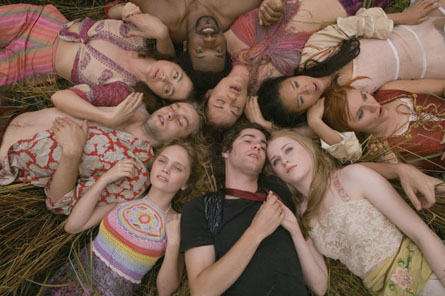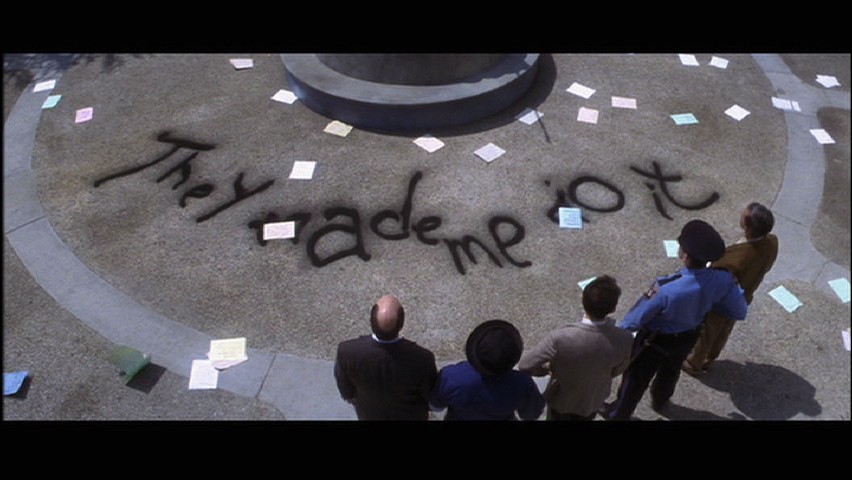Vision is one of mankind's most treasured senses, people rely on their eyes to take in information visually, that information then is processed into their own thoughts and perspectives, creating an one of a kind reality. In film, directors manipulate the use of editing and movement within the film to create such realities for the viewers, as well as the characters within the film; and using such realities to tell tales and illustrate the different perspectives that exist within the film that help move forward the plot


Movement can be categorized as the movement of the camera or actors, often both simultaneously. In the film Snatch(2000) directed by Guy Richie, the use of slow motions captures and sets the mood for the particular scene when Mickey, a bare-knuckle boxer is fighting in a rigged boxing match; he is lifted into mid-air with one punch and stays in air. The slow motion of this scene emphasizes his fall into calm waters rather than the boxing ring floor, the water represents his sub-conscious as he is emerged, ready to strike back; knocking out his competitor in one punch. The popular French film Ameile(2001) by director Jean-Pierre Jeunet, shows a different side of movement, creating a fluidness that can slightly change the perception of time for the viewer. In the scene where Nico asks Amelie if the girl in the photo is her, she pretends to casually write the menu on the glass window behind Nico; as she is admiring him from the behind, the shot is focused in a close shot of Nico dipping his fingers in sugar in a soft, slow, dream-like motion; but as Nico becomes aware of Amelie's presence, things speed up in a jumbled manner, snapping both the viewer and Amelie back into reality. After Nico leaves, the camera cuts to a close up of Amelie's face looking back at Nico, and the pull back tilt shows Amelie literally melting to the ground; as her heart melts for Nico and she suddenly becomes more vulnerable as a puddle of goo on the floor because she is in love. Across the Universe(2001) by director Juile Taymor is the story of Lucy and Jude's love story as they discover life together through a series of Beatles songs, movement of the film is psychedelic in it nature, fitting for the 70's theme. In the scene above, all the characters are laying down in a circle, and it's a close up aerial shot of the characters, the camera itself spins creating the feeling of unity and harmony.



Editing is a technique often overlooked in film, however, it is one of the most important things in the creation of film in that editing alone determines the way viewers perceive the film. Memento(2000) directed by Christopher Nolan is a film that went outside of box in the realm of editing, the film does not follow in the traditional sense of reality of playing in order. The final cut of the film is divided into two segments, black&white and in color out of order leaving the viewer confused, just as the main character in that he has no memory and the viewer only knows as much as the character throughout the film as more is revealed. Towards the end of the film, viewers find out the film have been playing in reverse from the end(in color) and normally from the beginning(in black&white) simultaneously at the same time till they collide at a point in time when the black&white scenes fade into the colored ones. Vanilla Sky(2001) by director Cameron Crowe, on the other hand, uses the traditional technique of shot reverse shot cutting to illustrate the conversations between characters. Crowe uses this technique many times through out the film, from David talking to Sophia and to his psychiatrist/father figure, it alternates between over the shoulder shots talking to each other. Richard Kelly uses editing to his advantage distorting reality for the viewers and main character Donnie in the film Donnie Darko(2001). The film is full of jump cuts of when Franks shows up telling Donnie to do terrible things, creating a lack of continuity by leaving out parts of the action and the viewer does not get to see the damage till it's already done.
In the world of film, many different details of movement and editing are thrown at the viewers without them knowing, these details are picked up by the sub-conscious into further understanding of the film as well as moving the plot forward in the direction if the director's wish. Those details are also prominent in that character development fully depend on it because they're their entire reality.
No comments:
Post a Comment